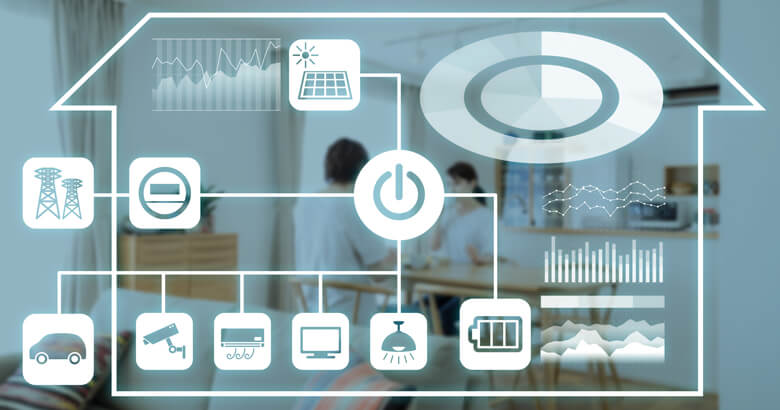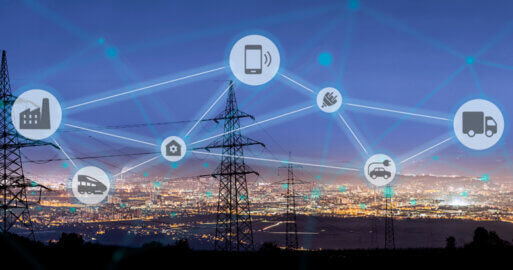Digitalisation in the Energy Industry, Part 2/3: New Business Models

The digital transformation in the German energy industry is creating several new ways of doing business. These include letting consumers reduce costs by intelligently controlling energy consumption, and even becoming power suppliers themselves! In a three-part blog series, our guest author, Tobias Hevekerl, senior consultant at econtea GmbH, Berlin, looks at the opportunities created by a digitalised energy industry.
Beginning with a short history of the power industry, in part two Tobias looks a new business models. In part three, he deals with the opportunities and threats of digital transformation in the power industry, as well as the question of approaches to digitalis ation and its drivers.
The digital transformation of the energy industry in opening up new business models
While the energy industry is moving to greener energy sources, it is also undergoing a digital transformation. Even today, we can see that these trends demand a new way of thinking. From generating and storing power to transferring and distributing it. From how we measure consumption and trade energy. And then there’s marketing, services and other business areas. They all need rethinking.
There are a number of topics and business models which come up as the entire value chain undergoes digital transformation. These include:[1] [2]
- Data and cyber security
- Virtual power stations
- Digitally controlling power plants
- Predictive maintenance
- Digital grid planning
- Optimising control of the grid
- Mobile apps for field engineers
- Smart grid and smart meters
- Merging and extending customer and consumption records
- More precise predictions in energy trading
- Analytics
- Intelligently analysing customer and consumption data
- Smart home
- E-Mobility
- Social media
- Connecting customer communication channels
- Digital products
- Digitalising processes and more.
In order to recognise the opportunities in the digital transformation of the energy industry, let’s take a closer look at some of the new business models. The most well-known are probably those pertaining to smart home/ smart living and electro mobility.
Smart home
It’s not only power suppliers that benefit from a digitalised energy industry. Customers, too, benefit from the convenience offered by smart home technology. Homes with smart technology can, for example, recognise if anyone is currently there. If so, it will automatically raise the thermostat on a cold, winter day. If everyone has left the house, it will reduce the overall temperature to save money. You can also control the heating by smartphone when not at home. Lights and other electric goods can also be operated in a similar way. You can even connect smart living technology to a smart meter, so that high power household goods such as a washing machine or dishwasher only run when the electricity unit price has dropped to a certain level.[3]
These are huge advantages for the consumers. The power suppliers face the challenge of designing suitably flexible tariffs and ensuring the necessary web services and electronic communication between endpoints, which is where econtea and SEEBURGER can help.
E-Mobility
Things are also moving forward in the traffic and transport arena. It is experiencing a shift from fossil fuels to renewable and sustainably produced energy sources. Electric cars are making a significant contribution towards a greener energy industry, and digitalisation is opening up avenues to integrate these into the grid to balance out fluctuations. We could optimising vehicle charging or offer balancing services. At peak times in the grid, public charging points could quickly and temporarily run at lower power. Electric car drivers would therefore be actively supporting the integration of fluctuating renewable energy sources. They should therefore also be offered incentives. One option would an optimised charging plan where electric car drivers could benefit from low prices for charging at night, or at times where a lot of renewable energy is being fed into the grid and the unit price is therefore lower.[4]
How do we get started?
Managing the challenges and achieving the new business models mentioned above is only possible if you have access to a huge amount of information. This information – or data – needs to be analysed to make accurate predictions. Most business models will require data from a variety of sources for a sound analysis and prognosis. One key role of digitalisation in the power industry is to network services and their data sources, while also merging the data into a form in which it can be analysed. Other important instruments which can prompt new ways of doing business include digital interfaces to partners and customers, as well as cloud services, IT security and big data analytics.
Conclusion
The digitalisation of the energy industry offers several opportunities for new, efficient and smart ways of doing business. Let us at econtea GmbH and SEEBURGER support you with consultancy and decades of experience in business integration, so that you can truly exploit the potential of a transformed energy industry.
In the third part of this blog series, Tobias Hevekerl will be looking in detail at the opportunities and risks of digital transformation in the power industry. As well as looking at how to get the right balance between the wealth of digital opportunities and not overwhelming the consumers, he will also be looking at what is driving innovation in the energy industry.
[1] cf. Deutschlands Energieversorger werden digital. Wie steht es um die Digitalisierung der deutschen Energieversorger? [Germany’s energy suppliers are going digital. How digital are they?] (accessed 13.09.2021).
[2] cf. BDEW Bundesverband der Energie- und Wasserwirtschaft: Die digitale Energiewirtschaft. [ The digital energy industry ] (accessed 13.09.2021).
[3] Cf. Megatrend „Digitale Energiewende“: Chancen und Grenzen. [Major Trends: The Digital Transformation of the Power Industry, Opportunities and Limits] (accessed 13.09.2021).
[4] cf. Tilman Huhne, Julian Schultheiß, Magnus Wobben, Patrick Wörner und Oliver Wohak: Optimale Erbringung von Systemdienstleistungen mittels Vehicle-to-Grid. [how to optimally offer balancing services vehicle to grid] In: Energiewirtschaftliche Tagesfragen Volume 70/10. Jg. (2020) PP 59-62. (accessed 13.09.2021).
Thank you for your message
We appreciate your interest in SEEBURGER
Get in contact with us:
Please enter details about your project in the message section so we can direct your inquiry to the right consultant.
Written by: Tobias Hevekerl
Tobias Hevekerl joined econtea GmbH in April 2016 and is a senior consultant, supporting utilities customers in project management, writing product requirement documents, running proofs of concept, optimising processes and product and test management. He advises the SEEBURGER product management team on the company‘s Trade Reporting Solution and RRM+. Following a traineeship in the commercial arm of an energy company and a degree in business informatics, from 2007 Tobias Hevekerl worked for two consultancies where he specialised in the utilities sector. In his free time, he likes to go hiking, jogging or cycling in the countryside. He also has a taste for adventure. He is a versatile sportsmen, enjoying mountain biking, climbing, zip lining, wall running, tackling high ropes courses, football and – unusually for a North German – skiing and snowboarding.





